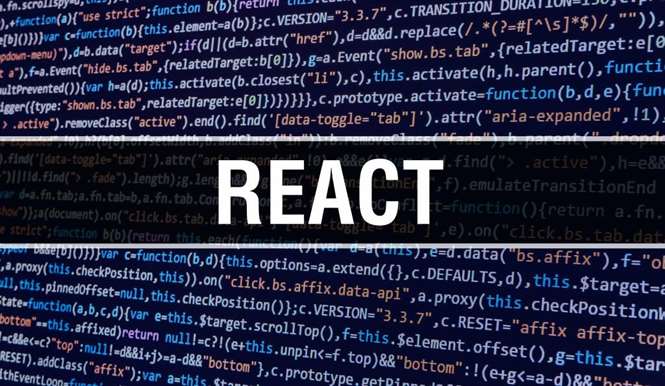These elements will comprise the action plan that may help the team tackle the present problem and prevent recurrences. If you’ve determined to conduct a root cause analysis, your division or group is likely experiencing some acute issue, or at least trying to make substantive enhancements to a specific process. Therefore, the first step of the foundation cause evaluation course of ought to be figuring out and defining the problem that you just wish to handle. Without a clearly outlined problem, it’s impossible to appropriately determine the basis causes. A smart way to look at the proactive/reactive picture is to consider the Bowtie Risk Assessment model.
There are not any live interactions during the course that requires the learner to talk English. We anticipate to offer our programs in further languages in the future however, presently, HBS Online can solely be supplied in English. It’s crucial to elucidate where your organization falls short, what problems that poses, and why it issues. Finding these gaps requires leveraging the “leader as beacon” type of management.
Root Cause Analysis
They’re not the basis cause of your problem however still contribute to it. The first step in root cause analysis is to obviously define the problem or event that’ll be analyzed through RCA. Some examples of issues might be a machinery breakdown affecting production planning, a flaw in your customer support procedures or a difficulty along with your provide chain. Most of the time these issues will trigger signs, which must be defined and tracked.
- Malfunctions, breakdowns, and even failure in processes can throw a wrench into the works of your company and cause a broad array of issues, together with delays, unfulfilled orders, loss in income, and more.
- Base timelines and sequences of events on reliable documentation rather than relying solely on personal recollections.
- As famous, the final precept of root cause evaluation is to find what’s creating a problem in order that it can be corrected and change the processes that triggered it.
- As we talked about earlier, this can take up a major period of time, so our tip is to utilize a variety of the different technologies and processes you’ve at your disposal.
- There are a number of charts and diagrams that can be used for this, similar to fishbone diagrams or tree diagrams.
- Issues and mishaps are inevitable in any organization, even in one of the best of circumstances.
Organizations can conduct root trigger analyses for a range or causes, from commonplace email service disruptions to catastrophic gear failures. Regardless of the character or scope of the difficulty, performing root cause evaluation should include the same elementary steps. The primary objective or trigger evaluation is to address the basis cause for a problem or opposed occasion. The subsequent aim is to determine the means to repair, alleviate, and learn from the underlying issues of the basis cause. Finally, the third aim is to take what was realized from this evaluation and apply it systemically to stop future problems or to duplicate success. Using root cause analysis, you probably can establish the issues behind your organization’s issues, develop a plan to address them, and make impactful changes.
Tools For Root Trigger Evaluation
Treating the symptoms might really feel good within the short term, but if you don’t diagnose the core trigger, you’ll likely have the same downside repeatedly. For example, when you get a crack in your sidewalk, it may look like progress to repave it. However, if a tree root triggered the injury, it will eventually crack once more. So until you solve the problem of the tree, you’ll be paving over cracks.
Root trigger evaluation is implemented as an investigative tool in quite so much of industries. Quickly consolidate and establish risks and threats in your environment. In simpler phrases, FMEA helps you anticipate what could go mistaken and how critical the results could be if it does. It’s like trying to foretell the place a leak might occur in a boat and determining how dangerous it will be if it did spring a leak.
Reactive Management
This method makes use of so-called “boolean logic”, primarily based on using the words “and”, “or”, and “not”. This method is superb for brainstorming, as it helps with visualization. It can also reveal bottlenecks and room for enchancment within the course of. For an instance, Nicole Zabel, a software developer at Key2Act, makes use of process much like 5 Why’s when discovering and resolving bugs. As we mentioned earlier, this will take up a big amount of time, so our tip is to utilize a variety of the other technologies and processes you could have at your disposal. But now that we’ve gotten that out of the way, it’s time to essentially get into the meat of things.
For example, investigators might launch an RCA when machinery fails in a manufacturing plant, an airplane makes an emergency landing or an online utility experiences a service disruption. In some instances, an RCA is used to better understand why a system is working in a certain method or is outperforming comparable methods. For the most part, nonetheless, the focus is on issues — especially after they affect important techniques.
The root trigger is the methodology that hasn’t properly managed the project. But understanding there’s an issue is one thing; determining its trigger and how to clear up the problem is one other. If you’re missing deadlines and the quality of your product or service is suffering, then you might need an issue that you can solve by way of root cause analysis.
Use insights gained from the RCA course of to develop preventive measures that mitigate the risk of comparable points occurring in the future. Additionally, contemplate how successful practices can be replicated to enhance total performance. After figuring out the foundation cause(s), develop and execute appropriate solutions to address the problem or concern. Continuously monitor and adjust the implemented solutions to guarantee long-term success. The RCA process typically involves amassing data, analyzing information, identifying potential causes, and implementing corrective measures.
Root Trigger Evaluation
The significance of approaching problems by way of technical complexity, environmental elements, and human faults makes RCA difficult however efficient. Identifying and resolving the root reason for problems can also improve the standard and efficiency of their industrial activities. An FTA allows a corporation to visually map potential causal relationships and identify root causes utilizing boolean logic. DMAIC is an acronym for the Define, Measure, Analyze, Improve and Control course of. This data-driven course of improvement methodology serves as part of an organization’s Six Sigma practices.
It entails digging deep to seek out the core causes behind issues so that they are often successfully addressed. While Six Sigma does incorporate root cause evaluation as a crucial part of its methodology, root cause analysis itself is not particular to Six Sigma. An event analysis is often used to establish the cause of main, single-event problem cloud team, like an oil spill or building collapse. Event analyses depend on quick (but thorough) evidence-gathering processes to recreate the sequence of occasions that that led to the incident. Once the timeline is established, the organization can extra easily establish the causal and contributing components. At this point, the staff has collected all needed data and starts to brainstorm for causal elements.
In addition to monitoring and evaluation tools, IT organizations usually depend on exterior sources to help with their root trigger evaluation. For instance, IT team members would possibly verify the AWS Health Dashboard to learn about service issues, or they may participate in Stack Overflow discussions to get others’ experience on subjects related to their RCA. Problems that warrant an RCA can be the outcomes of human error, malfunctioning bodily systems, issues with a corporation’s processes or operations, or any variety of different reasons.
That is why here we elaborated all about what’s Root Cause Analysis, its implementation, goals, advantages, and dealing. It is greatest suited to fixing complicated points and discovering alternative viewpoints. Having defined how to perform a Root Cause Analysis, it’s time to look at a few of the most effective RCA strategies. As famous, the overall principle of root cause evaluation is to search out what’s creating an issue so that it might be corrected and change the processes that triggered it. For this to work, however, the basis cause evaluation must be performed systematically.
Instead of addressing solely the surface-level points, delve deeper to establish the underlying causes behind the issue. This ensures that solutions are effective and sustainable in the lengthy run. Based in your analysis, develop practical options to deal with the foundation cause. This step turns your insights into tangible enhancements, enhancing total effectiveness. Specific sectors, such as petroleum, petrochemical, engineering, electrical energy, and manufacturing, make the most of RCA as a vital software to identify potential risks and prevent incidents from occurring. These sectors have a excessive danger of accidents and failures since they cope with complex techniques and mechanics on a daily basis.
As a result the analysis is often restricted to those things that have monitoring/observation interfaces and never the actual planned/seen operate with give consideration to verification of inputs and outputs. Hence, the saying “there is no root trigger” has become widespread in the IT trade. If you’re a leader who needs to problem-solve successfully, here’s an overview of root trigger evaluation and why it’s essential in organizational leadership. The problems that have an effect on a company’s success don’t at all times result from not understanding tips on how to clear up them. Once you understand what the difficulty is and how to stop it, you’ll be able to stop it from happening again. Now that you have got the data you need, it’s time to begin asking your self concerning the occasions and circumstances that lead to the problem.
Step 2: Ask “why?” Until You Discover The Root Cause
It’s already arrange for you, unlike other apps, and mechanically calculates project variance, workload, time, tasks and more, that are displayed in easy-to-read graphs and charts. It’s like having an prompt standing report with out having to do something. Of course, it is a great approach to get recommendations to successfully manage change, however it can be used to find problem causes. It additionally includes a lot of resources and the results aren’t all the time conclusive. Our RCA software program mobilizes your staff to complete standardized RCA’s while providing you with the enterprise-wide information you need to enhance asset performance and hold your group protected.
However, RCA works especially nicely for persistent faults, crucial failures, and exploring failure impacts. Thirdly, if you only fix the symptom of a problem, there are high chances the issue will pop up once more, and you’ll want to start the complete RCA course of from scratch. Root Cause Analysis (RCA) is the process of discovering underlying causes for an observable impact, like within the circumstances described above. Unfortunately, it’s not always clear the place these wrenches originated, making fixing and preventing related situations a lot harder. Get a high-level view of your progress and efficiency with our real-time dashboard.
Once the problem is recognized and clearly articulated to all involved events, leadership ought to create a project charter, which can assemble a team to finish the analysis. The group should include a facilitator to steer the staff via the evaluation and any staff members with either personal or skilled knowledge of the systems, processes and incidents that you’ll investigate. The aim of RCA is to establish the foundation explanation for the issue with the intent to stop the issue from recurring or worsening. The next step is to set off long-term corrective actions to handle the root trigger identified during RCA, and be positive that the issue doesn’t resurface.
Written by : admin
Subscribe To My Newsletter
BE NOTIFIED ABOUT BOOK SIGNING TOUR DATES







